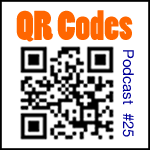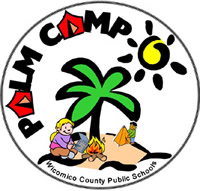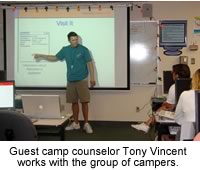It's hard to believe, but a new school year is upon us (though some of us with alternative calendars have been in session for several weeks already, right Elaine in North Carolina?). Many of us are thinking about those handhelds that have been locked away all summer. Others may be getting handhelds for the first time. It doesn't matter if the handhelds are new or not, you're going to have to prepare them for the upcoming school year.
The batteries on your handhelds are probably completely drained after being stuck in a cabinet or closet all summer. I suggest charging each handheld for three hours to get the batteries up and running properly. Because the batteries completely discharged, everything in the handheld's memory has been lost. Be aware, that from my experience, some handhelds never work again once the batteries have been emptied over the summer. Unfortunately, it's expensive to replace batteries and usually not cost-efficient. Anyhow, as long as the handheld does resuscitate after summer break, it will be just like it was when it was taken out of its box for the first time. You'll need to reload all of the software, documents, and settings on each handheld. There are some shortcuts you can take to make this happen.
No matter how you set up the handhelds, you will need to first turn them on after charging and go through the digitizer screen. You'll also have to set up the date and time. Unfortunately, there are no shortcuts for setting these things–but after setting up a class set, you'll be very fast at this task.
 My favorite way to set up handhelds is to use Grant Street Software's SD Deploy card. First you setup one handheld just the way you want it. That means you probably turn the system sounds off and add applications and documents. When you have this handheld the way you like it, insert the SD Deploy card while pressing the up button on the handheld. Then tell the card to make a clone of this handheld. Give it a minute or two. When done, insert this special SD card into another handheld. It will automatically make this handheld just like the first one you cloned. Continue inserting the card into as many handhelds as you need. SD Deploy is also available for Windows Mobile handhelds.
My favorite way to set up handhelds is to use Grant Street Software's SD Deploy card. First you setup one handheld just the way you want it. That means you probably turn the system sounds off and add applications and documents. When you have this handheld the way you like it, insert the SD Deploy card while pressing the up button on the handheld. Then tell the card to make a clone of this handheld. Give it a minute or two. When done, insert this special SD card into another handheld. It will automatically make this handheld just like the first one you cloned. Continue inserting the card into as many handhelds as you need. SD Deploy is also available for Windows Mobile handhelds.
If you don't have an SD Deploy card, I suggest setting handhelds up through syncing. First, gather all of the applications and documents you wish to have on all handhelds into one folder on your desktop computer (you may even take these files from the backup folder of your handheld or that of one you have saved from last school year). Then sync each handheld, giving each a unique username. Next, Mac users launch the HotSync Manager and select Install Handheld Files from the HotSync menu and choose the first username. Windows users launch Palm Desktop, select the first username in the upper-right corner, and click Quick Install. Mac and Windows users then drag the files from the folder into the install window. Next, select the second username from the pop-up menu and drag the files into the window again. Go through the same process for each username that was created. Yes, it's a lot of clicking, dragging, and dropping (but you'll find a rhythm as you do it). After each username has all of the applications and documents queued up, then sync each handheld again. After syncing each handheld, they will be ready to go!
Things to remember when setting up Palm handhelds:
- Turn off system sound.
- Turn down the game and alarm sounds.
- Install Documents To Go and Noah Lite (these are not easy to beam).
- For synchronizing, it's very important each handheld has the correct date and time.
- If you include numbers in usernames, have 1-9 start with a leading zero (i.e. 01, 02, 03). Then your list of users will sort properly.
|
In a one-to-one environment where each student will have their own handheld, I recommend not putting all the applications you will use on the handheld at once. The extra applications will take up memory and will probably be a distraction to students. I prefer to beam students the applications as they need them (for instance, after learning about Graffiti strokes, beam students
Giraffe). I do suggest pre-loading some commonly used Palm applications. These include Documents To Go,
Noah Lite,
Quizzler, and
eReader.
If the handhelds are part of a shared or lab set, it's probably best to load as much software as you can. Then you don't have to mess with trying to beam or load software when these handhelds are checked out.
When setting up, I suggest using a label-maker to put the HotSync username onto the cover of each handheld. If you have a one-to-one handheld environment, the HotSync name will probably be that of the student's. If handhelds are shared among students, you'll need some other naming or numbering scheme.
If your school year has already started before you setup the handhelds, don't forget that your very excited students would love to help you in any way they can. Use this valuable resource to label handhelds, sync them, or set them up. After setting up over 100 handhelds in my school, I know that I grow really, really tired of setting the digitizer, date, time, and time zone on each handheld. But I bet I know some youngsters who would enjoy that task much more than I.
Want to know more about handhelds in the first weeks of school? Check out this page. Want to know more about classroom management, including charging and usage contracts? Go to learninginhand's Management page. Got any more suggestions or advice for setting up handhelds for the school year? Please leave a comment!
 Thursday, August 18, 2005 at 2:25PM
Thursday, August 18, 2005 at 2:25PM  Here are some tips to for using Graffiti® (Palm) or Letter Recognizer® (Windows Mobile) text entry:
Here are some tips to for using Graffiti® (Palm) or Letter Recognizer® (Windows Mobile) text entry:




 When using the onscreen keyboard, instead of tapping the shift button, simply tap a key and drag the stylus toward the top of the screen. For example, if you tap a lower case b, when you tap the b key and drag toward the top of the screen, it will input a capital B. In the same way, you can tap and drag the 1 key and it will input an exclamation point. This is a pretty cool shortcut!
When using the onscreen keyboard, instead of tapping the shift button, simply tap a key and drag the stylus toward the top of the screen. For example, if you tap a lower case b, when you tap the b key and drag toward the top of the screen, it will input a capital B. In the same way, you can tap and drag the 1 key and it will input an exclamation point. This is a pretty cool shortcut!
 My favorite way to set up handhelds is to use
My favorite way to set up handhelds is to use  Holly Jobe, from Montgomery Country in Pennsylvania, recorded an interview with Martha Rolley, educator and Director of Education Marketing at Palm, Inc. While at the National Educational Computing Conference, Martha shared some insights into handheld computing in education. One of the most eye-opening statements was Martha's remark that schools need to move from "loanership" to "ownership" when it comes to students and handhelds. Martha tells us to think about it this way: How do you drive a rental car versus driving your own car? Which do you treat better? When students have handhelds of their own, they treat them with much more respect.
Holly Jobe, from Montgomery Country in Pennsylvania, recorded an interview with Martha Rolley, educator and Director of Education Marketing at Palm, Inc. While at the National Educational Computing Conference, Martha shared some insights into handheld computing in education. One of the most eye-opening statements was Martha's remark that schools need to move from "loanership" to "ownership" when it comes to students and handhelds. Martha tells us to think about it this way: How do you drive a rental car versus driving your own car? Which do you treat better? When students have handhelds of their own, they treat them with much more respect.

 Having troubles beaming? Are you getting fatal errors? Syncing problems, perhaps? There's a handy reference from
Having troubles beaming? Are you getting fatal errors? Syncing problems, perhaps? There's a handy reference from  I stopped by the Valiant booth at NECC and
I stopped by the Valiant booth at NECC and  Remember the
Remember the 
 Instead of simply going to the conference and then having no follow-up, Wicomico's campers get to spend the rest of the week learning, discussing, and exploring ideas from the conference. In fact, Tuesday I was their "guest camp counselor." I demonstrated a myriad of activities, strategies, and software for Palm computers. The campers got to participate in many sample lessons, so they were able to see handheld computing used in context. The best part was that the campers used these lessons as a springboard for brainstorming ways they can integrate handheld computing into their curriculum. The camp continues through Thursday. Campers will learn how to make eBooks, use iKWL, What-If Builder, and more.
Instead of simply going to the conference and then having no follow-up, Wicomico's campers get to spend the rest of the week learning, discussing, and exploring ideas from the conference. In fact, Tuesday I was their "guest camp counselor." I demonstrated a myriad of activities, strategies, and software for Palm computers. The campers got to participate in many sample lessons, so they were able to see handheld computing used in context. The best part was that the campers used these lessons as a springboard for brainstorming ways they can integrate handheld computing into their curriculum. The camp continues through Thursday. Campers will learn how to make eBooks, use iKWL, What-If Builder, and more.